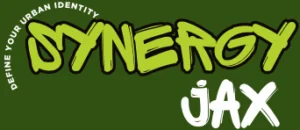In today’s fast-paced digital world, the demand for innovative solutions is skyrocketing. Enter the no-code library, a game-changing resource that empowers individuals and businesses to create applications without writing a single line of code. This approach democratizes technology, making it accessible to everyone, regardless of their technical background.
No-code libraries offer a treasure trove of pre-built templates and components, streamlining the development process. With these tools, users can focus on their ideas and creativity, transforming concepts into reality with ease. As the no-code movement gains momentum, understanding its benefits and applications becomes essential for anyone looking to stay ahead in the tech landscape.
Table of Contents
ToggleOverview Of No-Code Libraries
No-code libraries serve as essential tools for users seeking to develop applications rapidly and efficiently. These libraries consist of pre-built templates, UI components, and modules, which allow users to assemble software solutions without writing code. Users access a visual interface to customize elements, ensuring a user-friendly experience.
Key Features
- Drag-and-Drop Interface: Users can easily manipulate elements without technical skills. This feature streamlines the design process.
- Pre-Built Components: Libraries provide various customizable elements, such as forms, buttons, and databases, expediting development.
- Integration Capabilities: Users can connect applications with other services and APIs seamlessly. This functionality enhances the utility of no-code platforms.
- Version Control: Users can track changes and revert to previous versions effortlessly. This feature fosters collaboration and maintenance.
Applications
- Startups: New businesses leverage no-code libraries to launch Minimum Viable Products (MVPs) quickly. This approach minimizes initial costs and accelerates feedback collection.
- Small Businesses: Organizations adopt no-code libraries to automate processes, such as inventory management and customer relationship management. These solutions improve efficiency without needing extensive technical resources.
- Education: Educators employ no-code platforms to create interactive learning tools. These resources enhance student engagement and simplify lesson planning.
Benefits
- Accessibility: No-code libraries democratize development, empowering non-technical users to create solutions. This accessibility fuels innovation.
- Cost-Effectiveness: Utilizing pre-built components reduces development costs. Businesses save time and resources, especially during early stages.
- Speed: No-code libraries enable rapid prototype creation and iteration. Users turn ideas into functional applications swiftly.
No-code libraries represent a pivotal shift in application development, making technology more inclusive and fostering creativity in various industries.
Benefits Of Using No-Code Libraries

No-code libraries offer significant advantages that streamline the application development process. Their accessibility and efficiency empower users across various industries.
Accessibility For Non-Developers
Accessibility remains a core benefit of no-code libraries. Non-developers can build applications without requiring extensive technical skills. User-friendly interfaces, such as drag-and-drop functionality, enable individuals to create sophisticated applications intuitively. This accessibility democratizes technology and fosters innovation by allowing a broader audience to contribute ideas and solutions.
Faster Development Cycles
Faster development cycles are crucial for businesses operating in competitive markets. No-code libraries reduce the time from concept to deployment, enabling faster iterations and updates. Pre-built components and templates accelerate the development process, allowing users to focus on refining features rather than building from scratch. This efficiency enhances responsiveness to user feedback and market demands, facilitating rapid growth and adaptation.
Popular No-Code Libraries
No-code libraries significantly contribute to the growing ecosystem of application development by offering diverse tools. They empower users to transform ideas into functional applications without coding expertise.
Features Of Each Library
- Bubble: Provides a visual drag-and-drop interface for designing web applications. Supports responsive design and includes an extensive plugin ecosystem for added functionality.
- Webflow: Offers a powerful design tool with CMS capabilities. Facilitates website animations and interactions, along with integration options for e-commerce.
- Adalo: Enables users to create mobile apps through a user-friendly interface. Features include component libraries for building custom app screens and database integrations for dynamic content.
- Airtable: Combines database features with spreadsheet functionality. Users can create collaborative projects, track progress, and automate workflows through integrations and API access.
- OutSystems: Focuses on enterprise-grade application development. Supports integration with existing systems, provides robust security features, and allows for native mobile app creation.
Use Cases And Applications
- Startups: Utilize no-code libraries to develop Minimum Viable Products (MVPs) quickly, helping them validate ideas before committing resources.
- Small Businesses: Automate repetitive tasks and improve operational efficiency through custom applications created with no-code tools.
- Educational Institutions: Enable educators to create interactive learning environments and resources, enhancing student engagement without needing programming skills.
- Marketing Teams: Design landing pages and marketing campaigns that can be launched rapidly, enabling quick responses to market trends.
- Nonprofits: Streamline volunteer management and fundraising efforts by building custom solutions that facilitate communication and organization.
Challenges And Limitations
No-code libraries, despite their advantages, present challenges and limitations that users should consider.
Learning Curve
Learning to navigate a no-code library can still pose difficulties. Users may encounter a steep learning curve when adapting to new platforms, even without coding involved. Familiarity with design principles, user experience, and functionality requirements remains essential. Users with limited technical backgrounds may find it challenging to fully exploit the features available in these libraries. Awareness of basic concepts is necessary to ensure effective use and avoid frustration.
Integration With Existing Workflows
Integrating no-code libraries into existing workflows can present obstacles. Compatibility issues may arise when attempting to merge no-code solutions with current systems or software. Customization options might remain limited, potentially hindering specific needs or preferences. Users may face restrictions regarding data migration or API access, which can complicate seamless transitions. Organizations must evaluate the adaptability of no-code libraries to their unique operational environments before implementation.
Future Trends In No-Code Libraries
Increasing adoption of no-code solutions continues to shape the tech landscape. Analysts predict significant growth, with the global no-code development platform market expected to reach $45.5 billion by 2025.
- Enhanced Intelligence: No-code libraries will incorporate advanced artificial intelligence (AI) features. Automation of repetitive tasks becomes streamlined, enabling users to focus on strategic aspects. AI-driven insights can improve decision-making during the application development process.
- Greater Customization: Future no-code libraries are likely to offer enhanced customization options. Users may access more tailored components that align with specific business needs. This flexibility will allow businesses to reflect their brand identity effectively.
- Broader Integration Capabilities: Expansion of integration options will connect no-code libraries with diverse platforms and services. Users can seamlessly sync data across multiple applications, improving efficiency and collaboration.
- Community-Driven Development: Emphasis on community involvement will drive innovation. Users will contribute to libraries through templates, plugins, and components. Open-source ecosystems can emerge, fostering collaboration and shared resources.
- Focus on Security: As no-code libraries grow, so will the importance of security measures. Enhanced safeguards will protect sensitive data and ensure compliance with regulations. Developers will prioritize user privacy and data integrity.
- Industry-Specific Solutions: Future no-code libraries may feature industry-specific templates and components. Tailored solutions will cater to healthcare, finance, education, and more, helping organizations address unique challenges.
- Responsive Design Capabilities: Demand for mobile and cross-platform applications drives the development of responsive design tools. No-code libraries will simplify the creation of applications that function seamlessly across various devices.
These future trends highlight a transformative journey in the world of no-code libraries. Increased functionality and accessibility will continue to empower users, further democratizing application development.
No-code libraries are reshaping the landscape of application development by making technology accessible to everyone. They empower users to transform their ideas into reality without needing extensive coding skills. As businesses and individuals embrace these tools, the potential for innovation and creativity expands exponentially.
The future of no-code libraries looks promising with advancements in AI and customization. These developments will not only enhance user experience but also ensure that no-code solutions remain relevant in an ever-evolving digital world. By leveraging these resources, users can stay ahead of the curve and effectively navigate their unique challenges.










